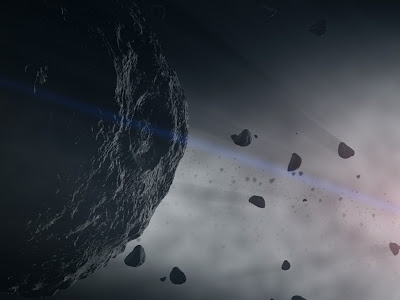Image courtesy of NASA.
Joel Kontinen
“Samples of a particular group of primitive meteorites — including a large one that fell near Murchison, Australia, in 1969 — all contain cyanide, bound in a stable configuration with iron and carbon monoxide. These same sorts of structures are found in enzymes called hydrogenases in modern bacteria and archaea, which could suggest that early life either borrowed from meteorites or that early Earth's geology formed the same kind of cyanide compounds, said study co-author Michael Callahan, an analytical chemist Boise State University.”
“The cyanide seems to have survived billions of years in space and a fiery trip to rest in icy Antarctica because it was bound up in a stable configuration with carbon monoxide and iron. ‘It's this really classical inorganic chemistry,’ Callahan said.”
“Callahan and his colleagues reported their work June 25 in the journal Nature Communications.
Naturalistic origin of life research has always been a more or less messy affair. The problem with their origin of life scenes is always the same: they don’t work.
This is can’t have happened here so they think it might have happened somewhere else. but introducing a comet in 1969. This is clearly panspermia, or the view that life evolved from somewhere else.
The problem with this is the thing that somewhere life has to be made, just making the the universe do the trick only make matters difficult for researchers, as they have to fathom where it all started.
And we know that the universe is guided by reason and it is intelligently designed. God says it happened here, so why cannot we just believe His words?
Source:
Pappas, Stephanie. 2019. Cyanide-Laced Meteorites May Have Seeded Earth's First Life. Live Science (28 June).
Thursday, 4 July 2019
Panspermia Can’t Solve the Origin of Life Hypothesis
Tunnisteet:
Darwinian storytelling,
origin of life,
panspermia















